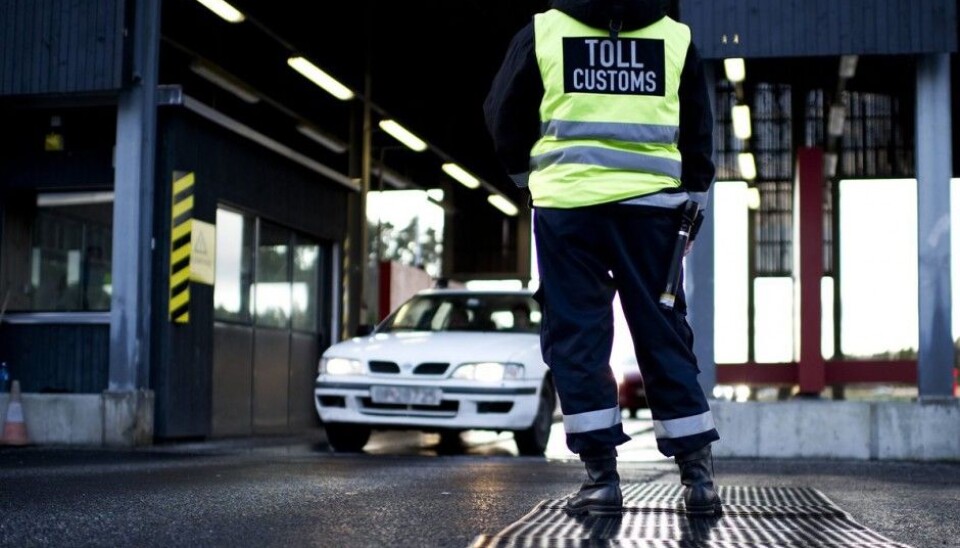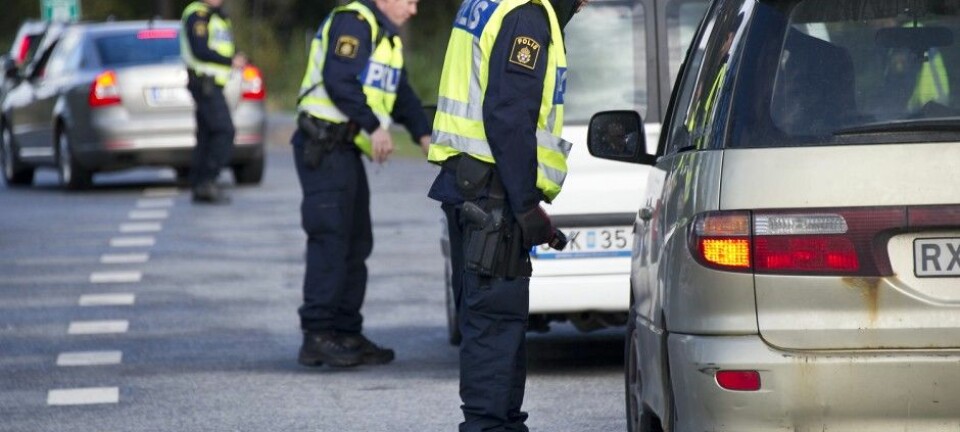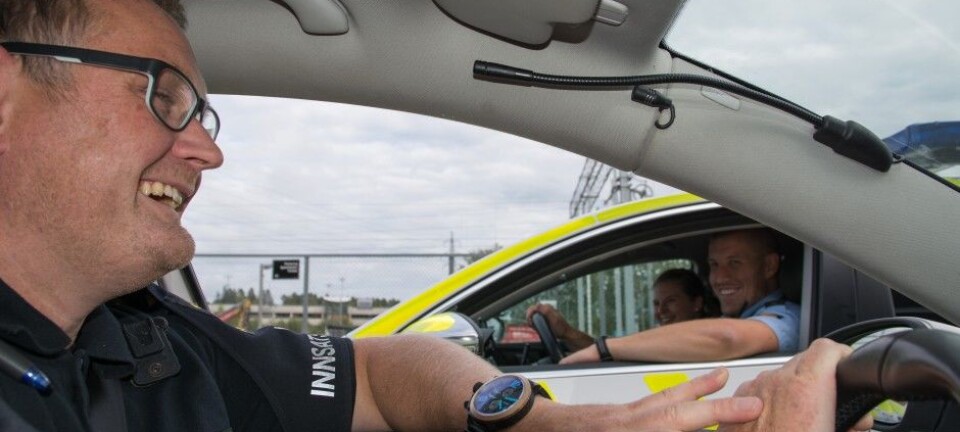
How the police can detect a group of liars
Researchers are suggesting a new option for interrogation: Put all the potential criminals in the same room and let them expose one another.
Exposing a liar is difficult, even for trained detectives.
A liar can practice saying the right things in a convincing way. And contrary to popular beliefs, reading body language is of little help in judging between veracity and mendacity.
But there are a few tricks. One is to see how suspects grouped together remember an occurrence.
“Those who are lying act differently in a group than those who tell the truth,” says Pär-Anders Granhag.
The psychology professor works at the Norwegian Police University College in Oslo and the University of Gothenburg in Sweden. Along with other researchers he has analysed studies about how to expose lies when a group of persons have agreed to lie and rehearsed a story.
Sometimes the best thing to do is to place them in a room together. Then they might inadvertently expose one another.
“The group cannot act like those who are telling the truth,” says Granhag.
Suspiciously consistent
In many criminal cases more than a single suspected perpetrator is involved. This can be the case with smugglers, armed robbers or terrorists.
They can sound very convincing if they have rehearsed together what to say in an police interview.
The liars can serve plenty of details about what happened and give an identical story.
Such conformity can sound convincing. But investigators have reason to be suspicious when everyone remembers the exact same thing. Reality is usually much messier.
“We humans remember different aspects of what happened,” says Granhag.
This is partly because we notice different things. It might be as simple as two persons sitting at a table in a restaurant with views in separate directions.
We also interpret what we experience in individual ways.
Memory as a process
This makes it natural for our stories to not make a perfect match. Memories are formed as a process.
When people are recalling something together they will disagree with one another, ask for help in remembering and work together to try to figure out what happened.
“If you and I were interrogated together we would constantly interrupt one another and say: ‘No, that wasn’t how it was. First we went to this place and then we went to that place’”, says Granhag.
People who have agreed on a story ahead of time are different. Their narrative is just too consistent to be true.
Police do not know enough
Liars are cautious about not telling anything different than their comrades because they think this will undermine their credibility.
And they are unfortunately right about that, thinks Granhag. Liars who stick to a single story often get away.
Granhag thinks research findings have not been fully grasped by Norwegian police and the judicial system. They often simply opt for the most consistent story.
“Consistency trumps all other criteria,” says the professor.
“The people making decisions in the judicial system do not really know how people who are telling the truth behave. They forget that there is a natural variation.”
Actually, many experienced police investigators are aware that memories can be messy. At least they give this impression when Granhag travels around giving lectures.
But it seems that they often forget this when working, according to the Swedish researchers. But he adds that this is just an impression he has. It is not based on systematic studies.
Disagreement on police practice
Trond Myklebust works like Granhag at the Norwegian Police University College and also has experience as a policeman.
He thinks the police already know that the more consistent statements are the greater the ground to be on the alert. He agrees with Granhag that it can be difficult to use this perception in real situations, but disagrees with Granhag’s impression of the police.
"You mean it isn’t used against people if they remember differently?"
“No, it isn’t. We see this, that different people have different recollections and that their memories change over time. It is important to remember that a memory can be swayed, for instance when a witness reads about the matter in the media,” says Myklebust.
He is intrigued by Granhag’s contribution and thinks it should be included in practical police work but thinks the focus on how the police can detect lies is less relevant for interrogations. Evidence is what counts most there.
“The objective for police when interviewing is to obtain information that can be checked out, by searching, gathering and ensuring clues that can establish the probability of a charged person’s guilt or innocence.”
Comparing stories
A detective can compare stories when several persons are talking about the same situation, either in individual interrogations or in group interrogations. Police can also compare disparities in what an individual says in several interrogations. They need to be aware that it can be perfectly normal for someone to tell slightly different versions of what happened.
It certainly helps police evaluate credibility when they get the opportunity to compare versions from different people.
“That is why it is so important to think correctly and nuanced about what it means to tell the truth,” says Granhag.
Group interrogations to help
The police can also interview witnesses or suspects together.
A special advantage of group interviews is that detectives get access to the process where the persons involved help one another to remember. Even if they have spoken together ahead of time they can still be telling the truth. But if they get unexpected questions they will have to use their own immediate memories, or imaginations.
This is where a liar can be detected.
Someone who never was at the dinner that is being used as an alibi, for instance, has already thought out answers about the way the restaurant looked at the time. But he probably has neglected to concoct a story of what view he had from his exact place at the table. He can also be surprised if asked to draw a sketch of the restaurant and point out where the WC was.
This technique is used today in individual interrogations.
Unusual method
Group interrogations are currently a rare thing. The police almost always separate their suspects.
Granhag thinks the multi-person interrogation method should be used more often. Not everyone goes along with that.
“This is something we don’t know nearly enough about at the moment,” says Svein Magnussen, professor emeritus at the University of Oslo’s Department of Psychology. He has researched the credibility of witnesses.
“We lack sufficiently solid results to say whether it is easier to expose false statements through group interviews,” says Magnussen.
In his opinion, too few studies have been made on this subject. Also, he points out that most of the studies conducted have been on students, not among investigators in realistic situations.
Witnesses sway one another
Even if group interviews could give a hint about whether someone is lying or not – the method can also keep the truth from coming out.
Other research implemented by Granhag has shown the risk that a person who remembers correctly begins to doubt his or her own mind and start believing more in the others who are incorrect. This happened when the Swedish Minister of Foreign Affairs Anna Lindh was killed in a department store in Stockholm. Many shoppers were witnesses to the knifing. They were detained by the police and gathered in a back room of the store.
“Of course they spoke with one another. This was a dramatic situation,” says Magnussen.
And they influenced each other’s memories, explains the psychologist, who is currently cooperating with Granhag on a new project.
Can wreck criminal proceedings
Although Granhag thinks group interviews can be of help he has not suggested these replace individual interviews.
The main thing is to take the group dynamics into account when detectives interrogate the members, whether it be individually or together. The idea is that disparate explanations are completely natural. Magnussen agrees on that part.
Granhag thinks group interviews probably cannot be used in traditional criminal proceedings where it is important to prevent the accused from getting their story aligned before going to trial. If they get that chance the odds are it will be harder to play them against each other. But if they are in separate places the police can play them against one another or give them information tactically in portions.
But group interviews can be useful in other situations, for example in the first interview with prospective smugglers at a border crossing or when there are lots of witnesses in one place.
When a suspicious car rolls through the customs area, the agents should be aware of how much disagreement there normally is between the passengers. People telling the truth about a trip will usually have different opinions about how many stops they have made along the road and what was the last one. The same goes for interviews of persons seeking asylum. But most asylum seekers know that the authorities tend to be more trusting of corroborating stories about the trip.
Assistant Chief of Police Trond Myklebust agrees that group interrogations can work well at customs stations.
“In a screening of multiple persons, as in a border control, completely identical stories from everyone in a car is a good sign of something suspicious which should be looked into. I think we do this already, both in the Customs and in the police. When a patrol car stops a vehicle, they talk with all the occupants and get an impression from that.”
But this method should not be used in the first formal interrogation, stresses Myklebust.
“This is not relevant when we start a formal criminal investigation – when we have a suspect and the conversation turns into an interrogation. The law makes specific demands about how the interrogation is conducted. The customs agents of the police must interrogate persons individually on the basis of contraband, tickets from the trip and other types of concrete evidence.”
Damned hard to expose
The meta-analysis of research that Granhag was involved in revealed that few studies have been done on how to unmask lies among groups of persons. The researchers only found 20 relevant studies.
The value of group interviews has been researched even less than that. Only seven of the studies had this focus. For instance, researchers have not worked on what occurs in a group with a strict hierarchy, where the members would not dare interrupt the leader. Nor has much been done to reveal ways of detecting one liar among a group of persons telling the truth.
This is still a fresh field of research, write Granhag and colleagues.
Magnussen thinks the most important contribution of their meta-study is to shed some light on a problem that has been neglected in research.
But he thinks that in practice, it would be hard to find good special techniques for group interviews. This is because even though researchers might find statistical differences between groups that are truthful and groups that are not, persons in each untruthful group could still make themselves sound credible.
“The groups look a lot alike. Nobody can figure which one is telling the truth based on how they tell their story.”
"Is it impossible to tell which is lying?"
“I think it is damned hard.”
--------------------------------------
Read the Norwegian version of this article at forskning.no
Translated by: Glenn Ostling
































